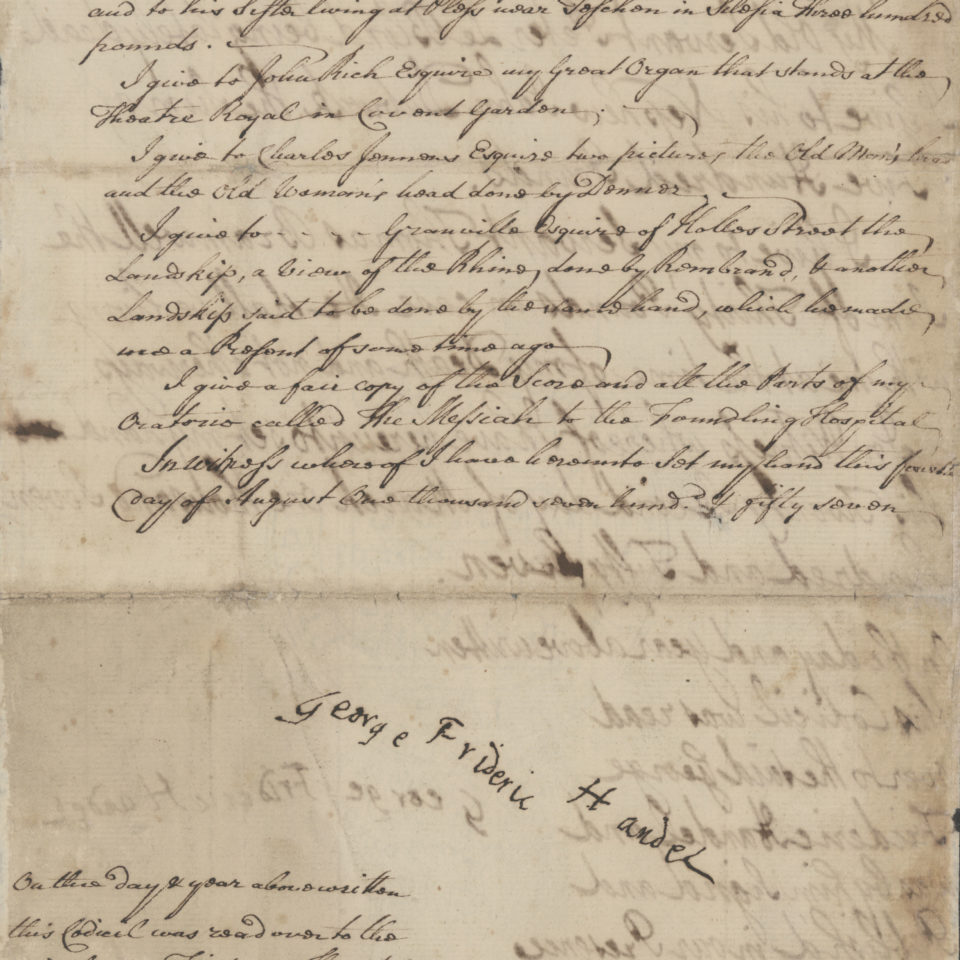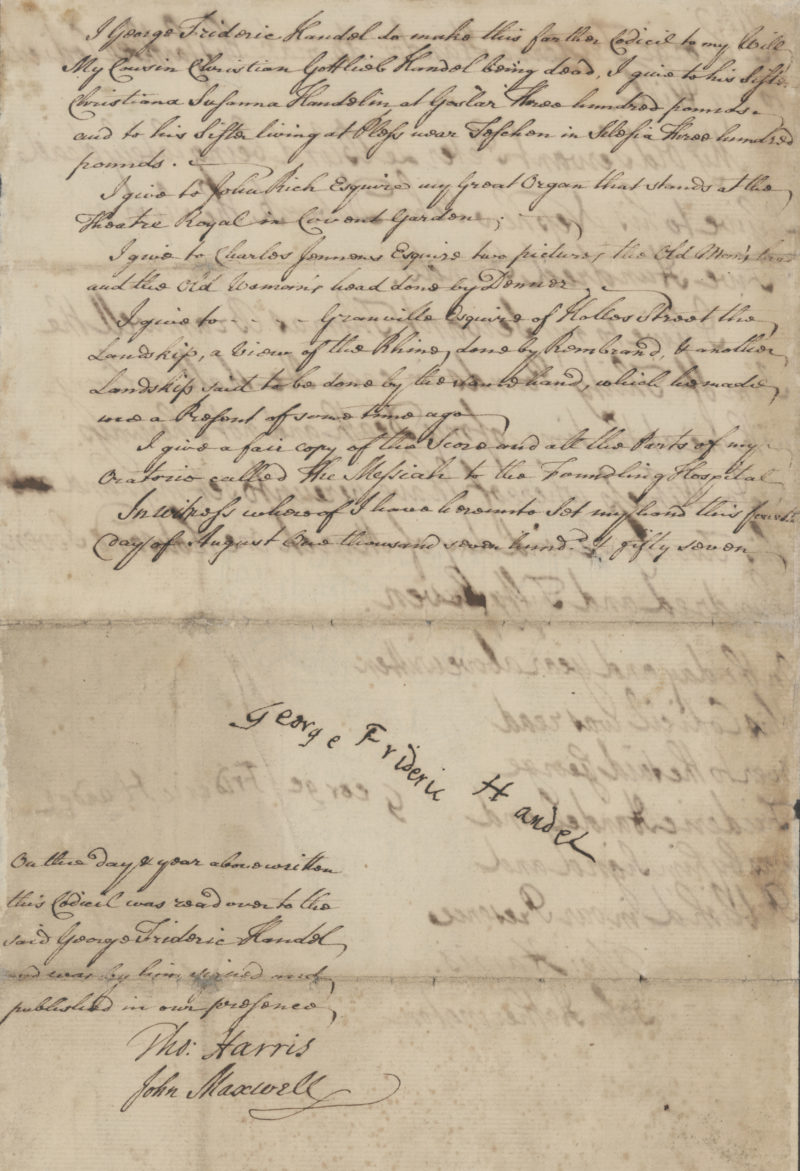Holograph manuscript will, dated 1st June 1750, with four codicils signed by the composer. Not witnessed.Codicils dated 6th August 1756, 22nd March 1757, 4th August 1757 and 11th April 1759; first three in the hand of J.C. Smith, the fourth probably in the hand of John Maxwell. Witnessed by Thomas Harris and John Hetherington (nos 1 and 2), Thomas Harris and John Maxwell (no.3) and A.S. Rudd and J.C. Smith (no.4).
Provenance
William Rockstro (1823-1895) writes of this duplicate (the original draft being in the Registry of the Prerogative of Canterbury at Doctors’ Commons) “passed from the family of his executor, Mr. George Amyand [1720-1766, created Sir in 1764], into the hands of the late Mr. Snoxell, of Charterhouse Square”. Victor Schoelcher (1804-1893) says that it was obtained from the “heir of Amyant” although William Charles Smith (1881-1972) says there is no evidence for this; however, presuming Amyand’s heir to be his first son, George Cornewall (1748-1819) [who took his wife’s surname] it would be more likely that Snoxell acquired it from him or a further descendant.The collection of William Snoxell ([b. St Bride’s 1797?-death registered Apr-Jun 1879]) was sold at Puttick & Simpson on 21st July 1879, the will (lot no.80, including the conjugate leaf) being purchased by William Hayman Cummings (1831-1915) for £53. In 1880 Cummings is quoted in “A Few Words about Handel” (Proceedings of the Musical Association, Sixth Session, 1880-1881, p.31) in noting the sale of the will from Amyand’s Family to Snoxell and thus to himself.After Cummings’s death in 1915 the will and codicils then appear in the sale of his vast music collections sold at Sotheby, Wilkinson & Hodge (17-24th May 1917), as lot no.135 (complete with frontispiece illustration in the catalogue) which was purchased by the bookdealer Maggs for £210. On 4-7, November 1918 (lot no.304, on second day’s sale) it was sold in the Parke Mayhew Pittar (d.1918) sale, again at Sotheby’s, for £270 to “Moreton” who also purchased many other varied items.On 28 April, 1921, the documents appear in an auction catalogue (lot 162 with illustration) of ‘Selections from the Arbuy Library and other purchases in London and Paris of the late George D. Smith [Part Six], Sold by order of his estate’ at the Anderson Galleries, 489 Park Avenue, New York, and was apparently sold for $650.Gerald Coke (1907-1990) notes his acquisition of the will through the hands of Percival (“Percy”) Horace Muir (1894-1979) in the late 1930s (it was in his collection by 1938, see accession no. 13186) from an unidentified person in America (see Handel Collections and their History, edited by Terence Best, p.2). Muir was a partner in Elkin Mathews and documents within the archive held at the Lilly Library at Indiana University note various appraisals but nothing about where or from whom Muir acquired the manuscript: on 20th May 1937 it was valued at £1000 and in 1947 at £1500.

